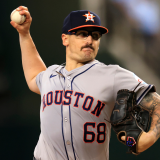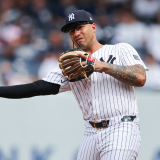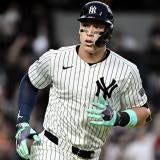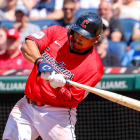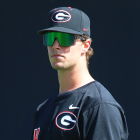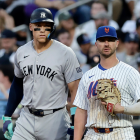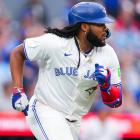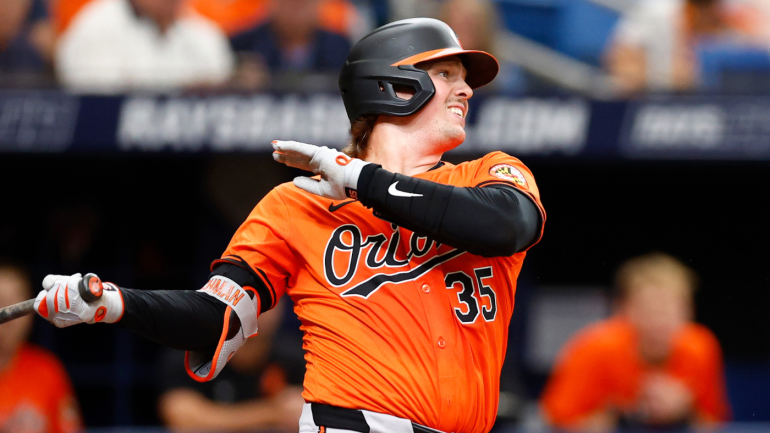
It feels like Opening Day was just last week, but the All-Star break is less than a month away, and the trade deadline is not too far behind that. The samples aren't so small anymore and contenders are starting to separate themselves from pretenders. Well, kind of. There are still a lot of teams in the mushy middle as July approaches. Here now are three MLB trends worth knowing.
Adley's aggressiveness
Entering Tuesday's important series-opener with the Yankees, Orioles catcher Adley Rutschman owned a 133 OPS+, a career best but not anything wildly out of line with his 129 OPS+ from 2022-23. The overall output is roughly the same but the shape of that production is not. After being a high on-base hitter in 2022-23, Rutschman is trading some selectivity for power in 2024.
| 2022-23 | 2024 | |
|---|---|---|
AVG/OBP/SLG | .268/.369/.439 | .289/.333/.473 |
HR per 600 PA | 17.1 | 29.0 |
Walk% | 13.6% | 6.3% |
Strikeout% | 16.2% | 19.0% |
Ground ball% | 40.8% | 34.1% |
Chase% | 23.8% | 33.4% |
Swinging strike% | 5.9% | 8.4% |
Pitches per PA | 4.25 | 4.01 |
Hard-hit rate | 37.4% | 42.6% |
To be clear, Rutschman's strikeout and swinging strike rates are still better than the MLB averages (22.2% and 10.9%, respectively). He is striking out and whiffing more, but he isn't doing so excessively. He's still making a lot of contact. He's just making slightly less of it, and in exchange is hitting the ball harder and in the air more often. As a result, Rutschman's power output has jumped.
It doesn't take long for word to get out in this league and already opponents are combating Rutschman's newfound aggressiveness by throwing him fewer fastballs and fewer strikes. Thirty-five games into the season, Rutschman was seeing roughly 42% four-seam fastballs and 55% pitches in the zone. Those numbers have since been whittled down to 33% and 50%, respectively.
Rutschman has responded by reverting back to his patient self. His chase rate was up around 40% through those first 35 games. Now it's back down to 33.4%, which is still elevated compared to 2022-23, but not far above the 28.2% league average. Rutschman found his level. He was ultra-aggressive earlier in 2024. Now he's reigned it in a bit and appears to have found a happy medium.
The next step is finding a way to pair that 2022-23 plate discipline, when Rutschman was one of the most selective hitters in the game, with his 2024 thump. It might not be possible! Usually you have to trade a little selectivity to maximize damage. Given Rutschman's talent and eye, I bet there's still another level here, and he can regain more discipline without sacrificing power.
Brown's new sinker
It is mid-June and the Astros are still several games under .500 primarily because their rotation has been one of the worst in the sport. Astros starters took a 4.55 ERA (24th in MLB) and 2.9 WAR (26th in MLB) into Tuesday's action, and they recently lost both Cristian Javier and José Urquidy to season-ending elbow surgery. A starter is a must at the deadline to get back into the race.
Right-hander Hunter Brown, Houston's top pitching prospect two years ago, has been the club's biggest rotation liability this year. He has a 5.00 ERA in 13 starts (and one relief appearance), and that's coming off a 2023 in which he had a 4.12 ERA in the first half and a 6.57 ERA in the second half. That's almost a full calendar year of replacement level-ish production.
The arrow is beginning to point back up though. Brown's last eight games have been much, much better than his first six:
| First 6 games | Last 8 games | |
|---|---|---|
IP per G | 3.8 | 5.7 |
ERA | 9.78 | 2.58 |
WHIP | 2.22 | 1.04 |
Strikeout% | 20.9% | 28.6% |
Walk% | 12.2% | 8.2% |
Ground ball% | 48.1% | 54.5% |
HR per 9 IP | 1.96 | 1.19 |
A tale of two pitchers, that is. So what changed? Brown added a sinker on May 5. It was a pitch he had never before thrown in the big leagues, then suddenly he used it 11% of the time on May 5. That usage has gradually increased and last time out Brown threw 25% sinkers against the Tigers. He struck out nine and held Detroit to five singles and zero walks in seven shutout innings.
Brown has cut back on his four-seamer fastball and cutter to make room for the sinker, which he throws almost exclusively to his armside (in on righties, away from lefties). It was part of the strike zone he didn't use much previously, at least not with any velocity. He would bury changes to that side of the plate and that's it. The sinker forces hitters to respect that side of the plate now.
"It just allows him to use his other weapons," Astros manager Joe Espada told MLB.com recently. "When you have that sinker at 95, 97 running into hands, now you have the four-seam up in the zone, the breaking ball, and cutter. Now you have to protect the entire plate, and it's a very challenging game itself. When you have to cover that much of the plate, it's almost impossible to hit."
Brown, a consensus top-50 prospect two years ago, showed such promise late in 2022 and early 2023 before hitters told him it's time to adjust. What he was doing wasn't working. So, Brown and the Astros went to school, and developed this new sinker. It's made a huge difference for him and credit to Brown for making it work. Picking up a new pitch in-season is not easy.
SF's funky bullpen
With a 4.32 ERA (21st in MLB) and 0.8 WAR (21st in MLB) entering play Tuesday, the Giants' bullpen hasn't been anything special this season. The unit ranks middle of the pack in win probability added. It's also fifth in Stuff+, a metric that grades the physical characteristic of the pitch (velocity, movement, etc.). The results haven't been great but the models love the pitch shapes.
One thing the Giants have in their bullpen is diversity. They attack you with relievers who have so many different looks and release points. Here are the release points of San Francisco's top eight relievers in batters faced (catcher's view):
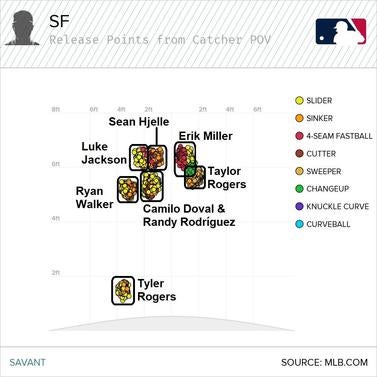
Camilo Doval's and Randy Rodríguez's release points overlap, otherwise San Francisco's bullpen is all over the place. The 6-foot-11 Sean Hjelle and 6-foot-2 Luke Jackson have similar release heights but get there with very different arm slots. The two lefties (Erik Miller and Taylor Rogers) have different releases. Tyler Rogers is on his own little island down there as a submariner.
Arm angle and release point diversity became a big talking point during the 2020 postseason, when the Rays used a wide mix of relievers to win the AL pennant. The logic is simple: Show hitters different looks and don't let them get comfortable by locking into a similar release "window." So much of pitching is being different and weird. San Francisco's bullpen embodies that.
Of course, the Giants haven't gotten great results from their bullpen, so perhaps all these release points aren't having the desired effect. This here is more of an acknowledgement of the diversity the Giants have in their relief corps than praise of their success. Funky bullpens are fun and different, and no team shows hitters more unique releases and arm angles than the Giants.




